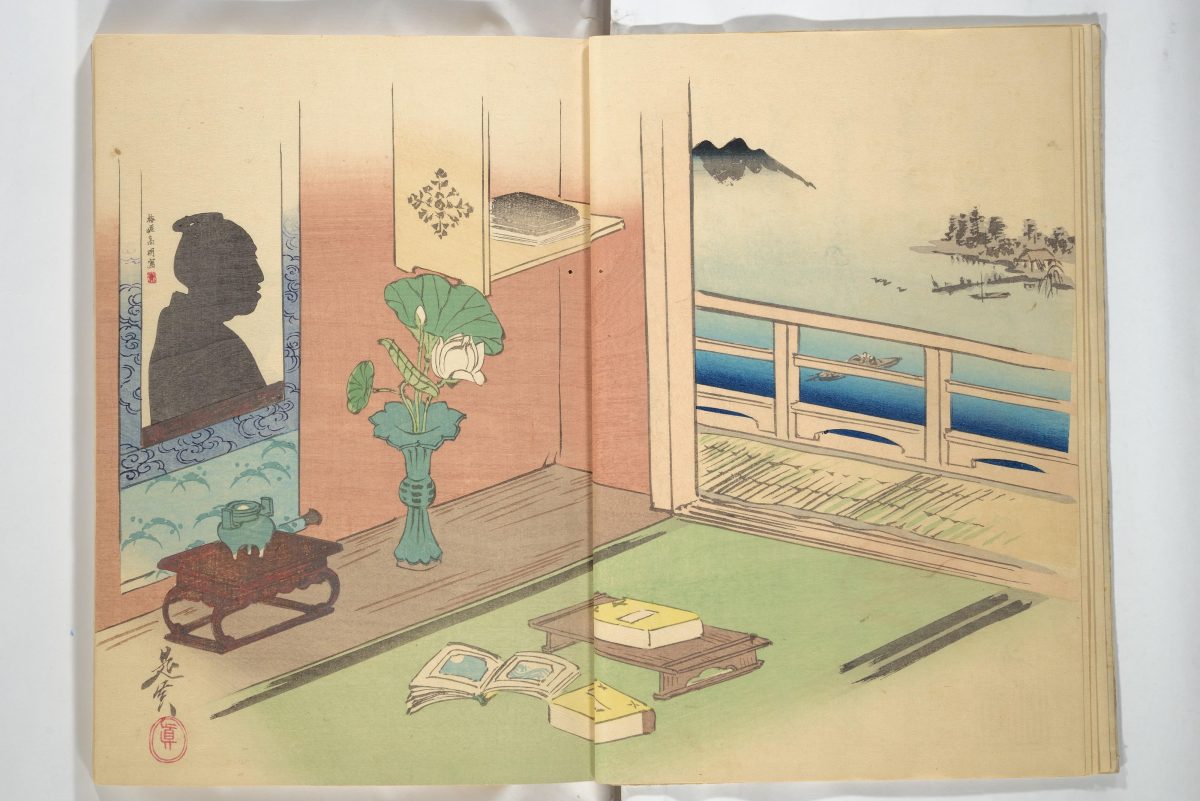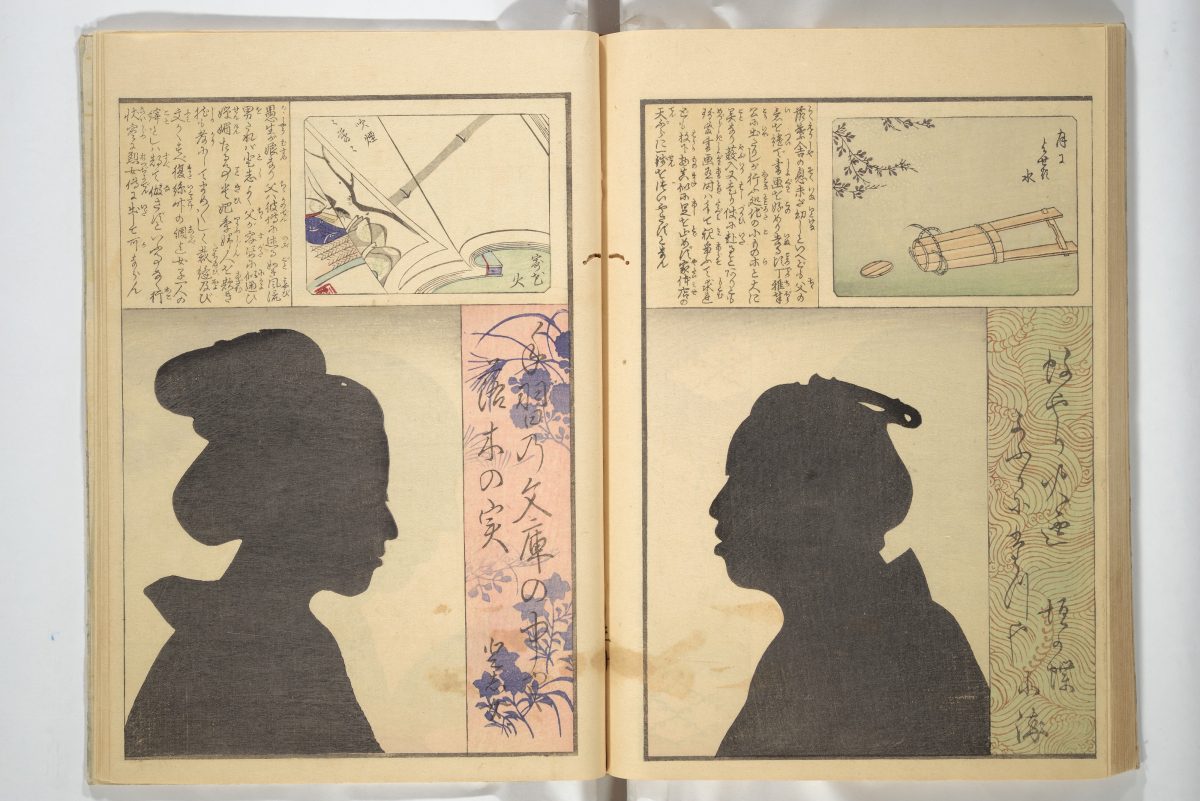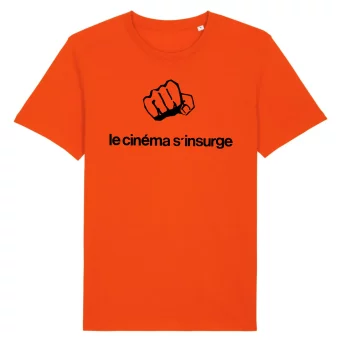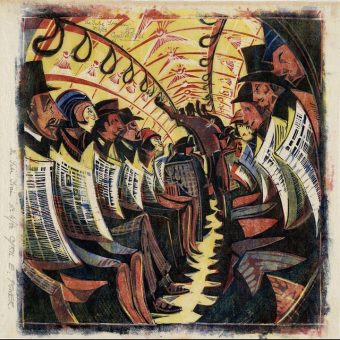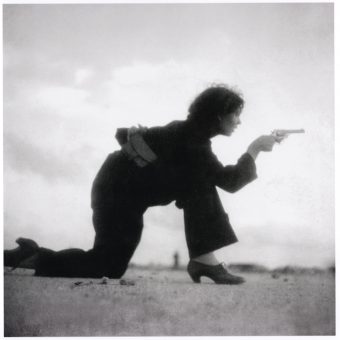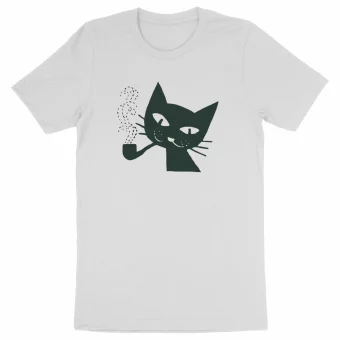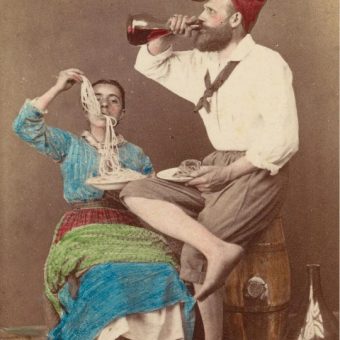At a party in late-nineteenth-century Japan, you might be expected to sit behind a paper sliding door (shōji) while an artist captured your backlit silhouette.
Here, we present images from the compilation book Clear Shadows (Kuma naki kage) (aka Shadows Without Shadows; Silhouettes; or No Shadows in Any Nook or Corner), 1867. We see silhouette portraits of members of the kyōga-awase club by artists Ochiai Yoshiiku (1833 – 6 February 1904) and Shibata Zeshin (March 15, 1807 – July 13, 1891).
The book also includes biographies, puzzles and poems in the manner of kyōga-awase (picture-matching for fun) – partygoers were given a subject to illustrate and told to draw anything except for the subject itself.
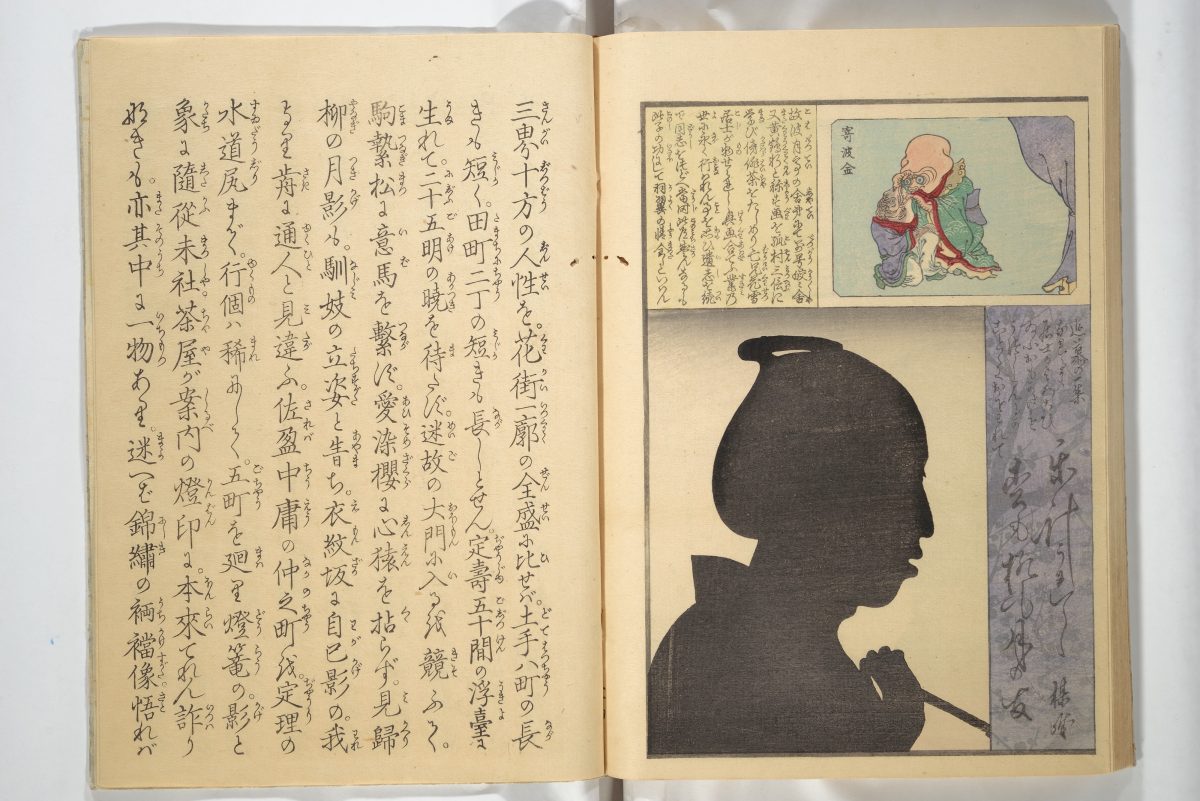
Shibata Zeshin (Japanese, 1807–1891) – No Shadow in Any Nook or Corner (Kuma naki kage), 1867
Clear Shadows was created in honour of Hagetsutei Kasetsu, a patron of the Edo-based kyōga-awase club who had died three years earlier.
The publication features the silhouettes of 67 individuals (57 are men, ten women and one cat) as they do everyday things. At the top right of each portrait are the club members’ riddle submissions. Each participant was given a theme related to the meaning of one of the kanji characters in Kasetsu’s name (wave, moon, flower or snow), which was combined with one or more of the five elements (wood, fire, earth, metal or water).
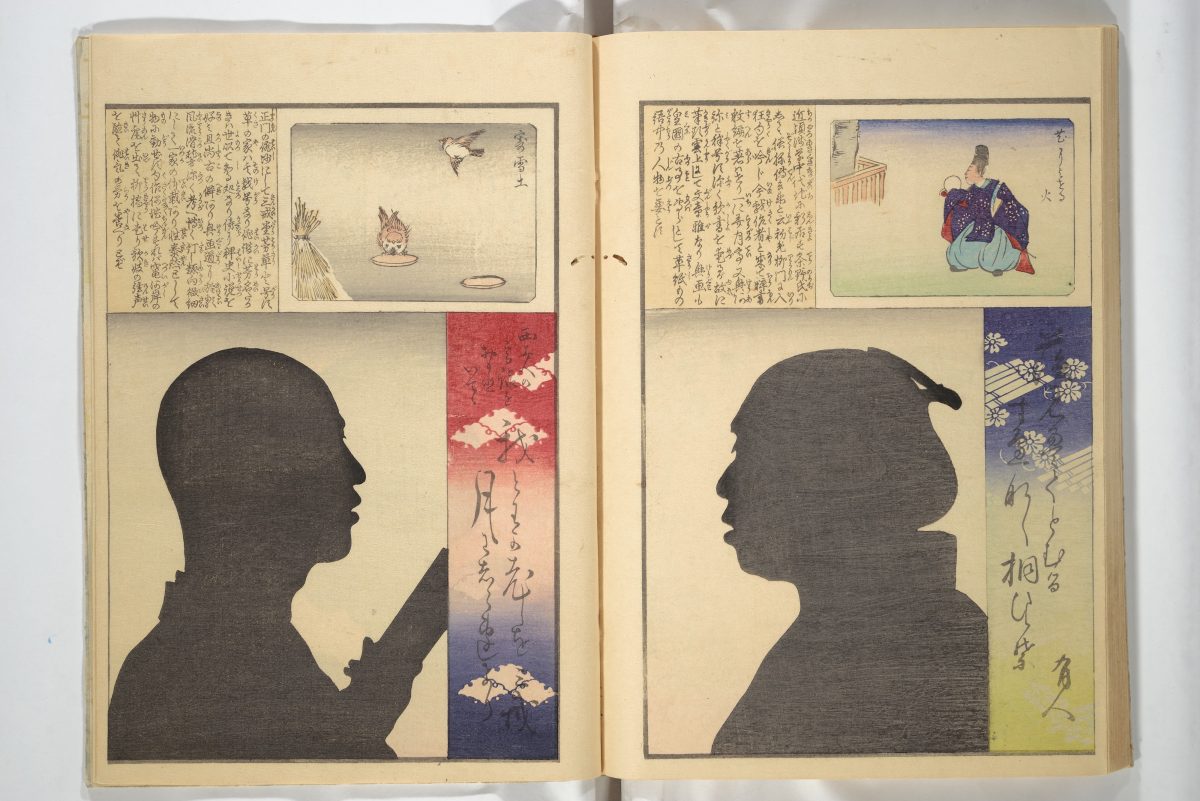
As Dr Koto Sadamura writes, the same year that Clear Shadows was published, Yoshiiku produced a series of 38 woodblock colour prints, each featuring a silhouette profile image of a kabuki actor. The text included on one of the prints in the group offers a hint as to why silhouettes became a technology for memorializing the dead: “they indeed give the impression as though one is in the presence of these people.”
In the postscript of Clear Shadows, the writer Kanagaki Robun (1829–1894) observed: “Appearance is a deceptive skin. Silhouette shows the real bones [core structure of the person].”
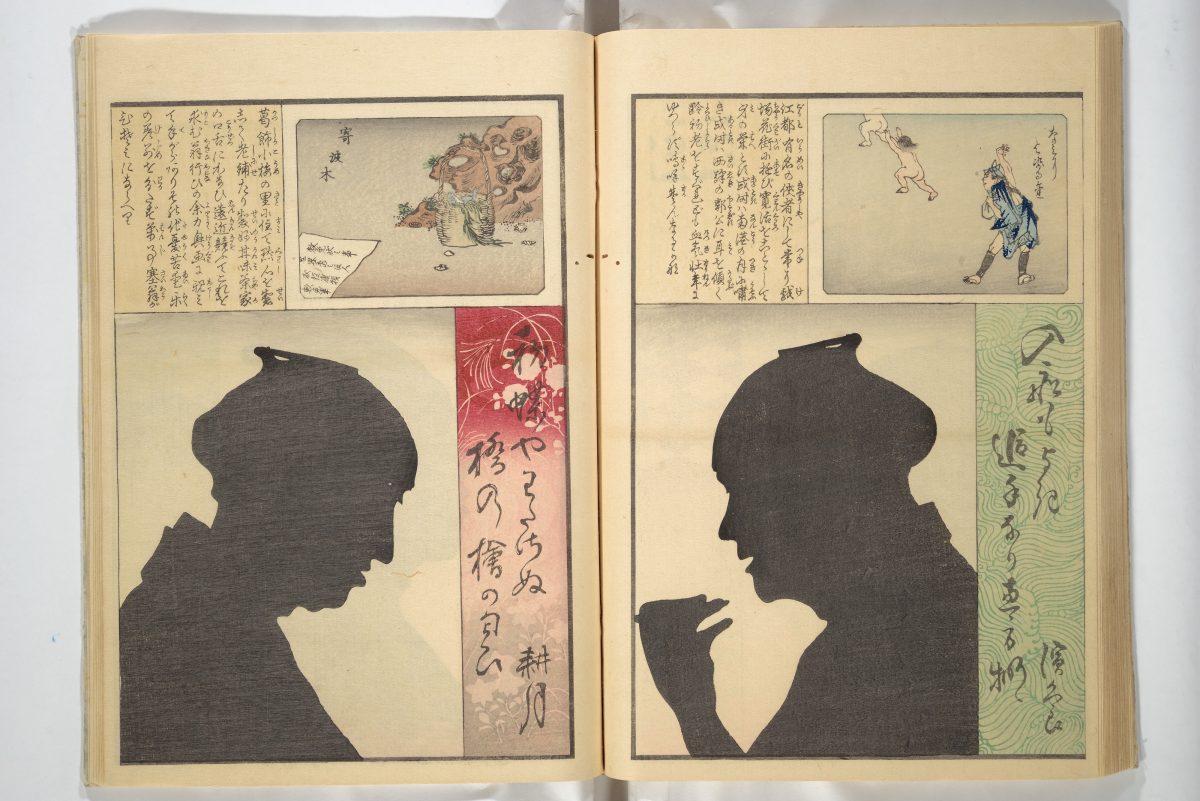
Kuma naki kage, 1867
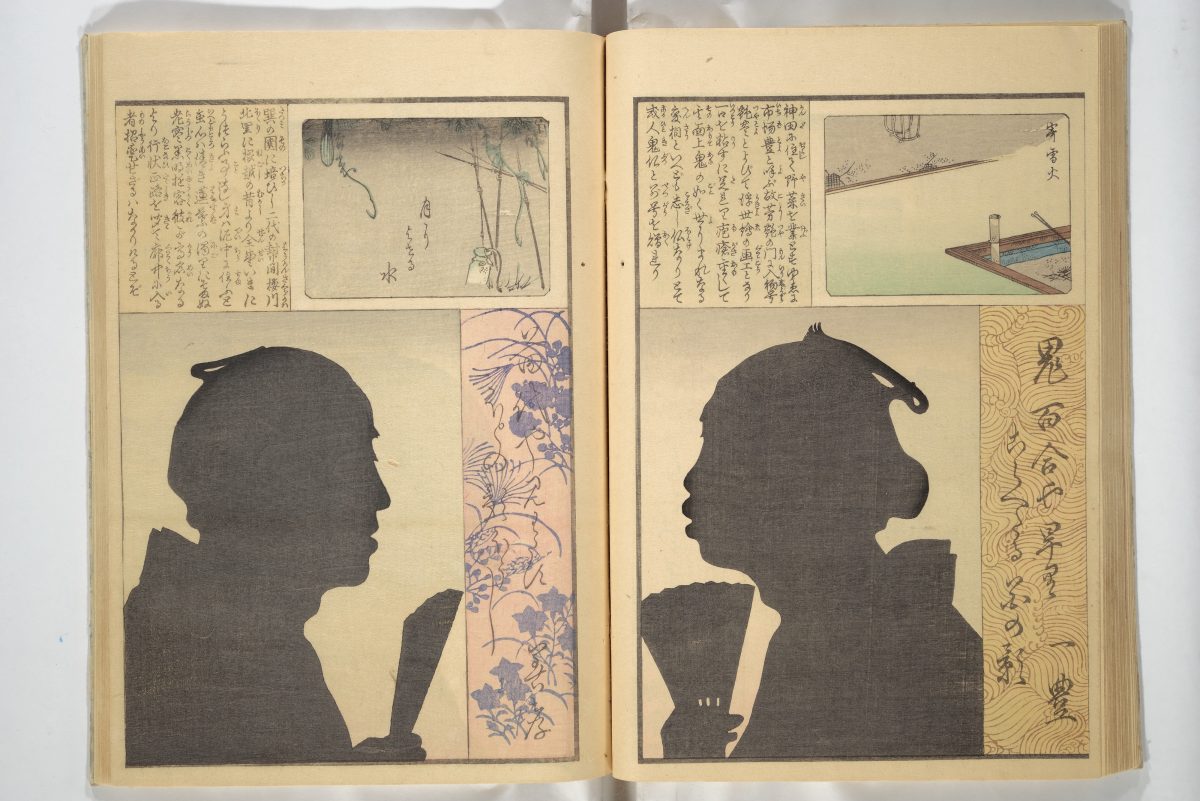
Kuma naki kage, 1867
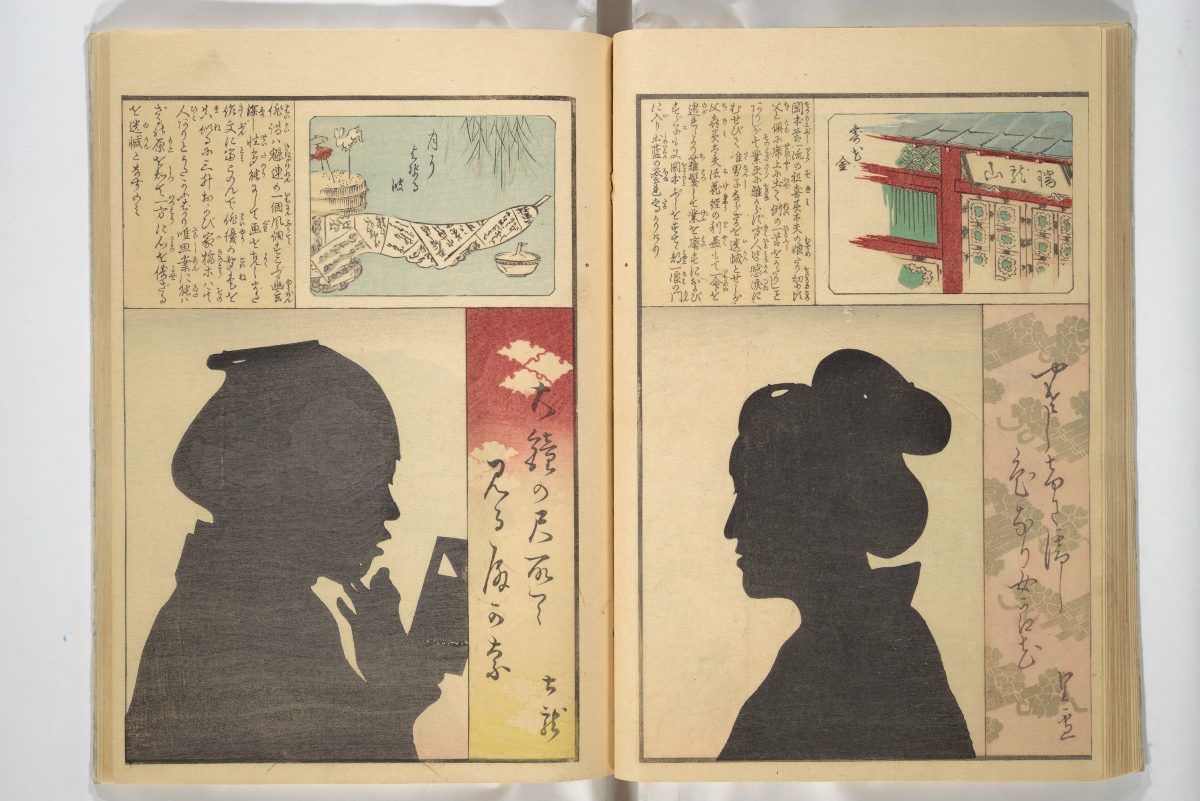
Kuma naki kage, 1867
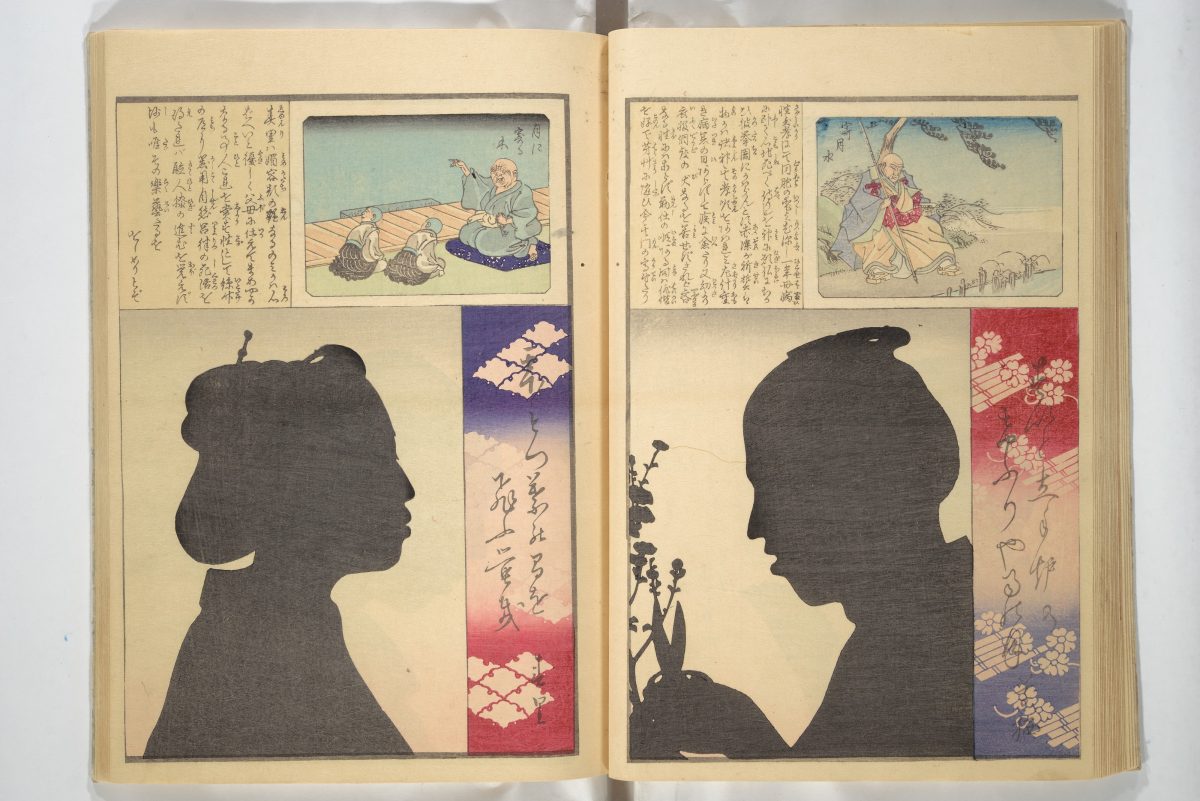
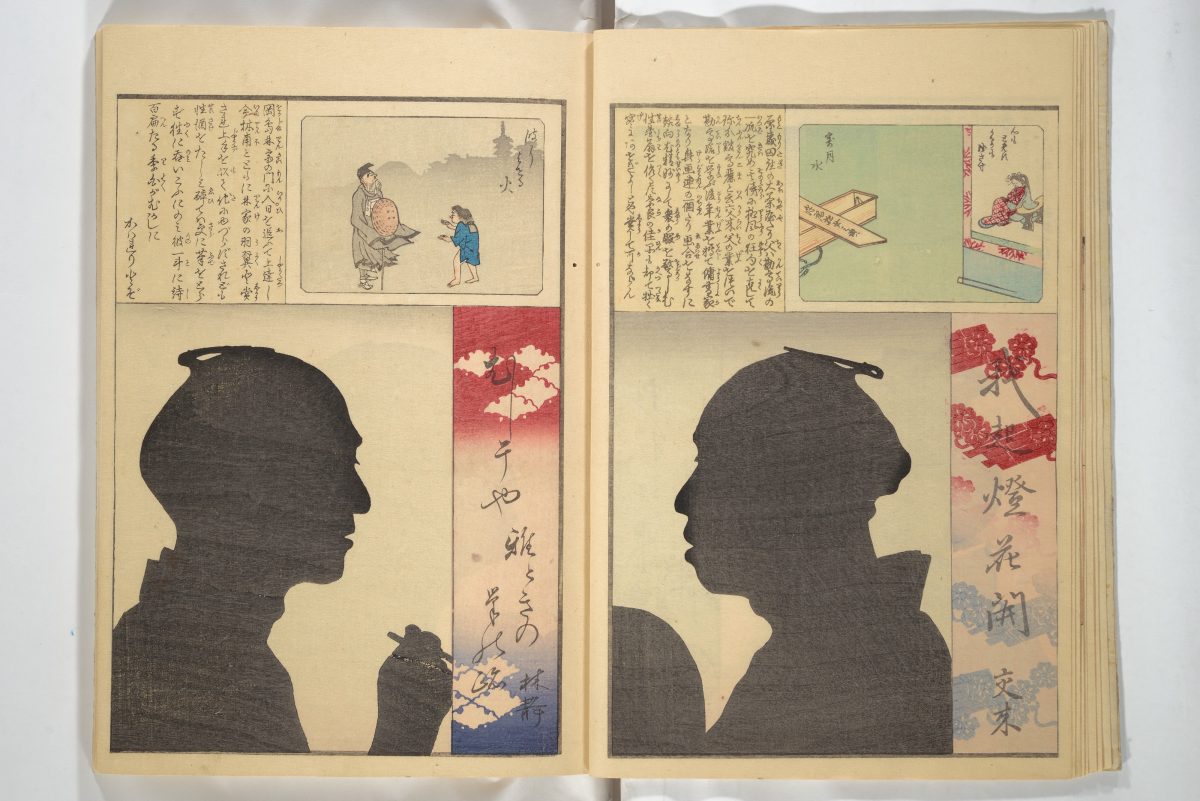
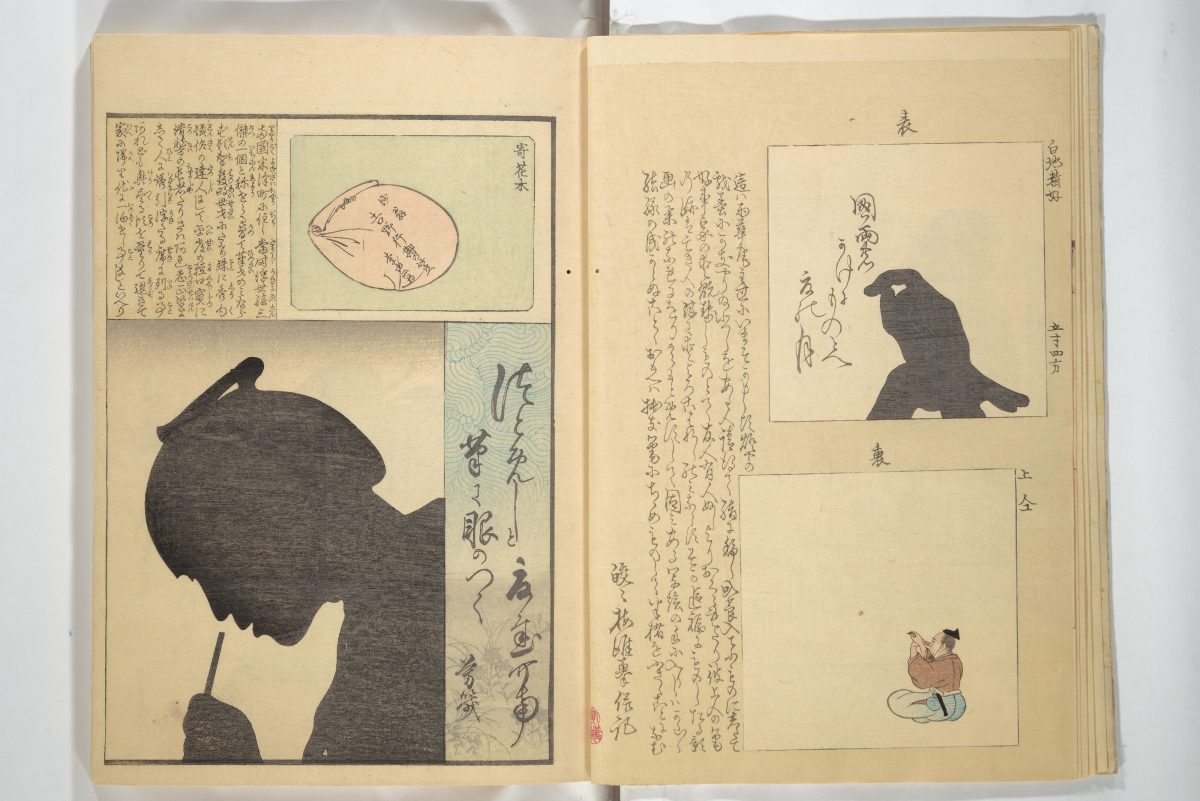
Via: University of Oregon, PDR, The Met.
Would you like to support Flashbak?
Please consider making a donation to our site. We don't want to rely on ads to bring you the best of visual culture. You can also support us by signing up to our Mailing List. And you can also follow us on Facebook, Instagram and Twitter. For great art and culture delivered to your door, visit our shop.
